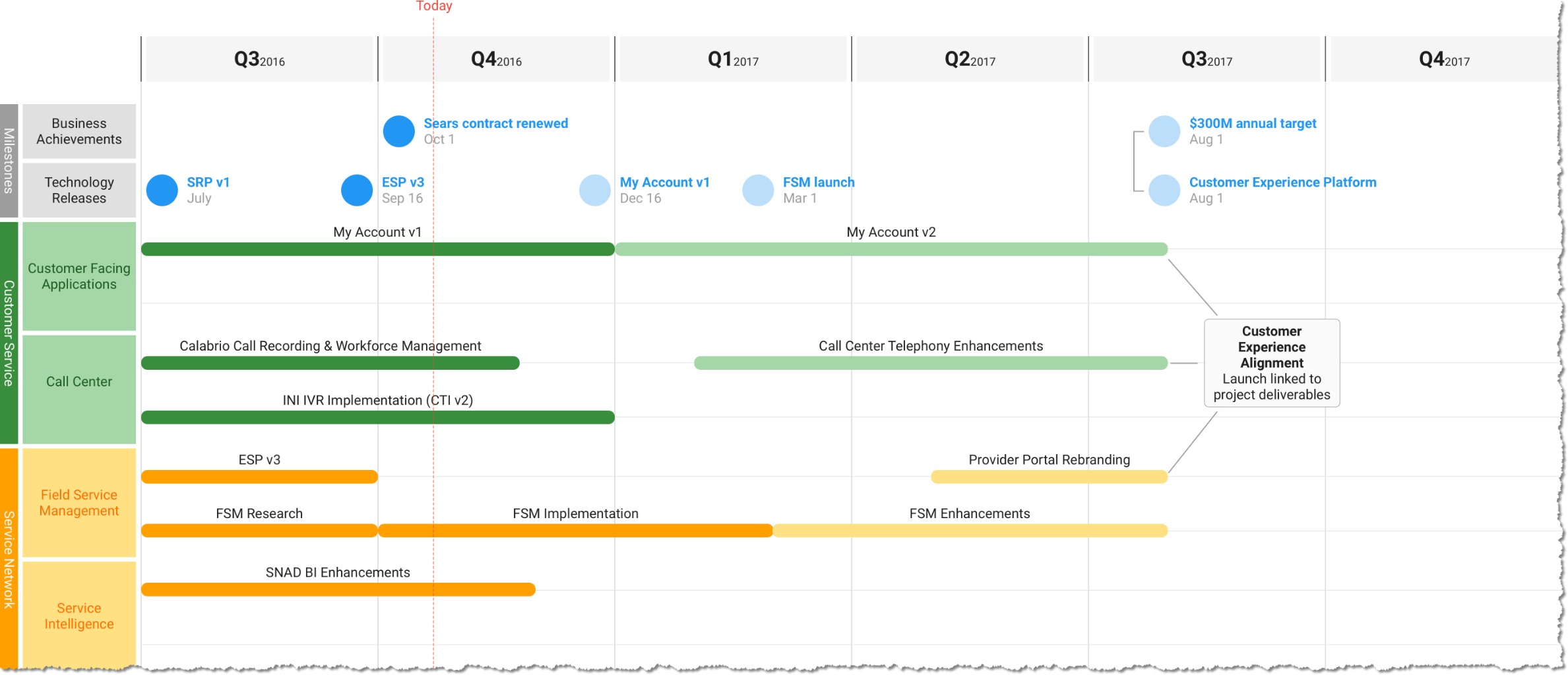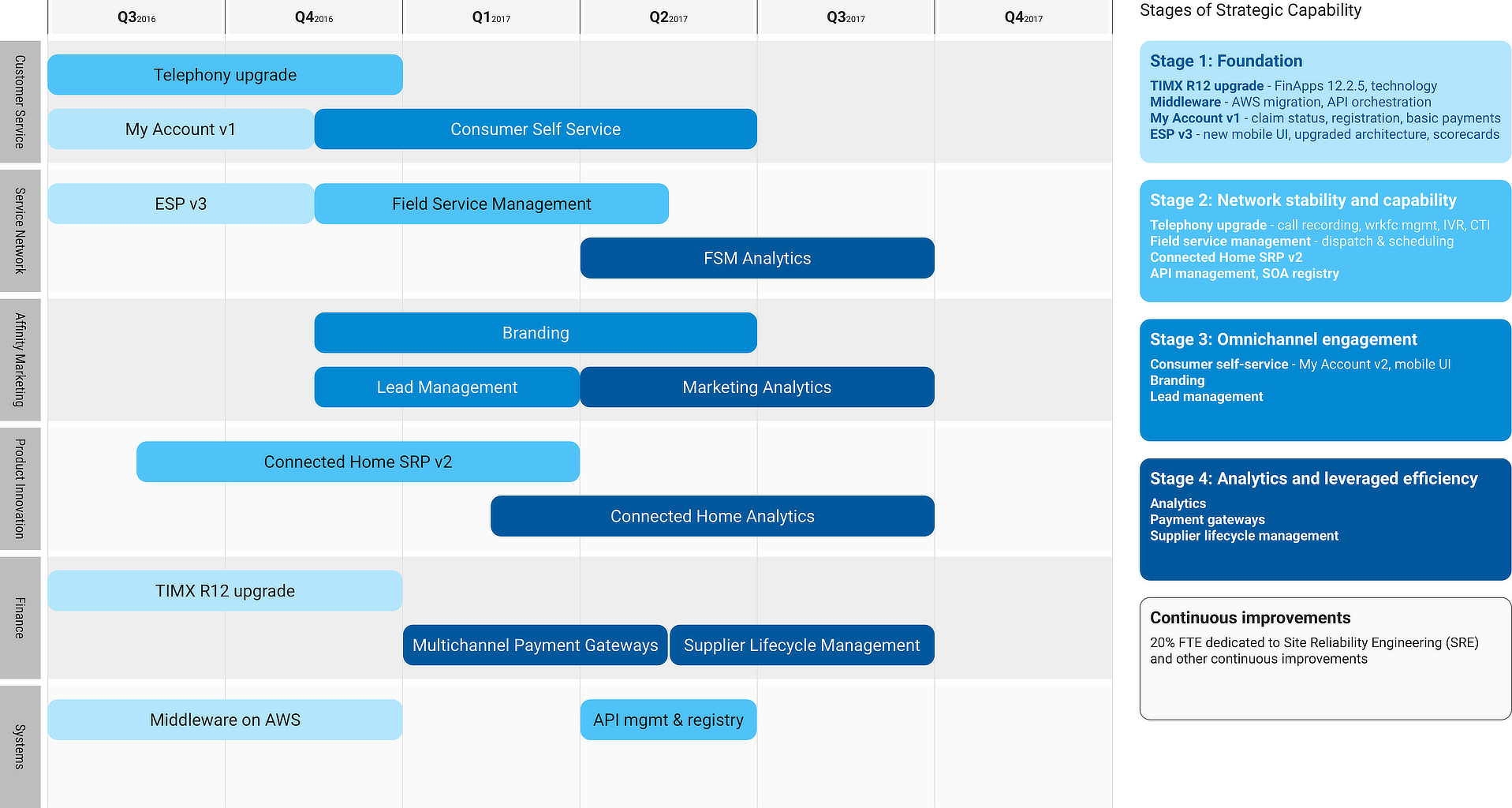Roadmaps are a tricky thing. They’re supposed to layout an often multi-year plan for how your product and/or technology will evolve, and include things like projects, milestones, and alignment of major initiatives. The problem is, unlike those physical highway roadmaps, technology is ever changing. Remember, too, that the business is continually responding to change.
Yet, roadmaps do provide a valuable service, if you understand how to use them. My opinion and approach to roadmaps is that they exist to frame conversation, debate, and eventual decisions for your projects. There’s something about putting it down in visual form that gets you further down the road.
So, my first iteration of a roadmap is generally the most opinionated one, where I do the dirty work of trying to fit everything together. Occasionally, it simply works out and the first draft sees a long life, but more often it gets people thinking about how they view the road ahead. That’s a good thing.

